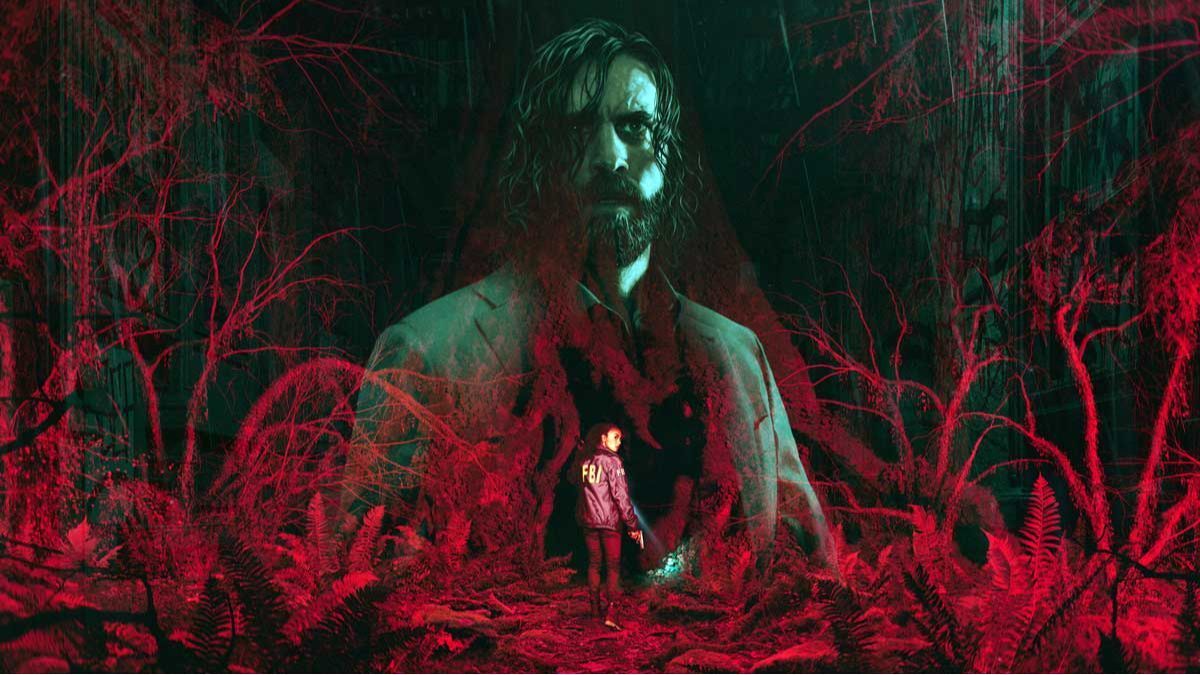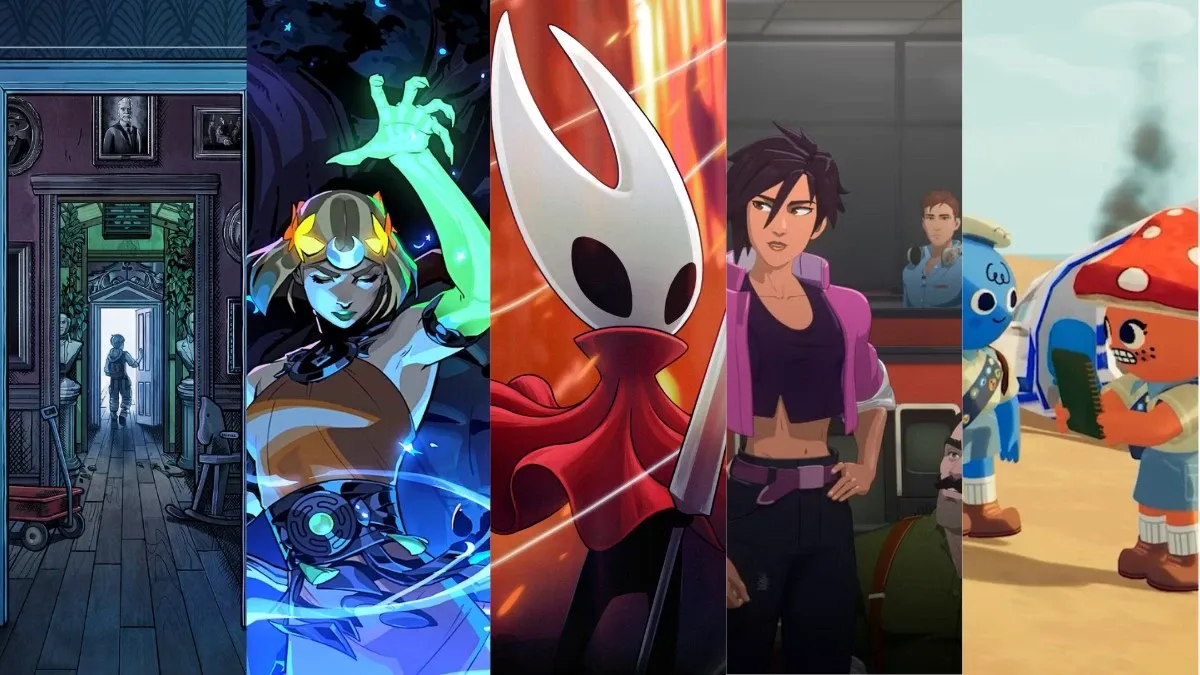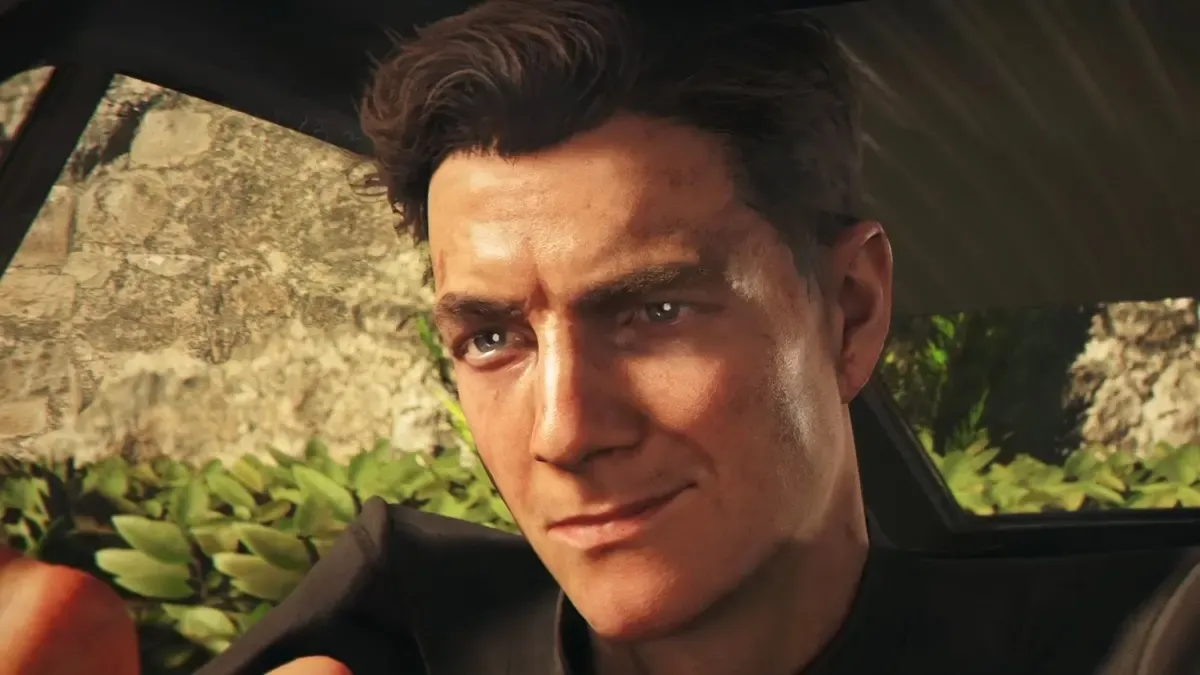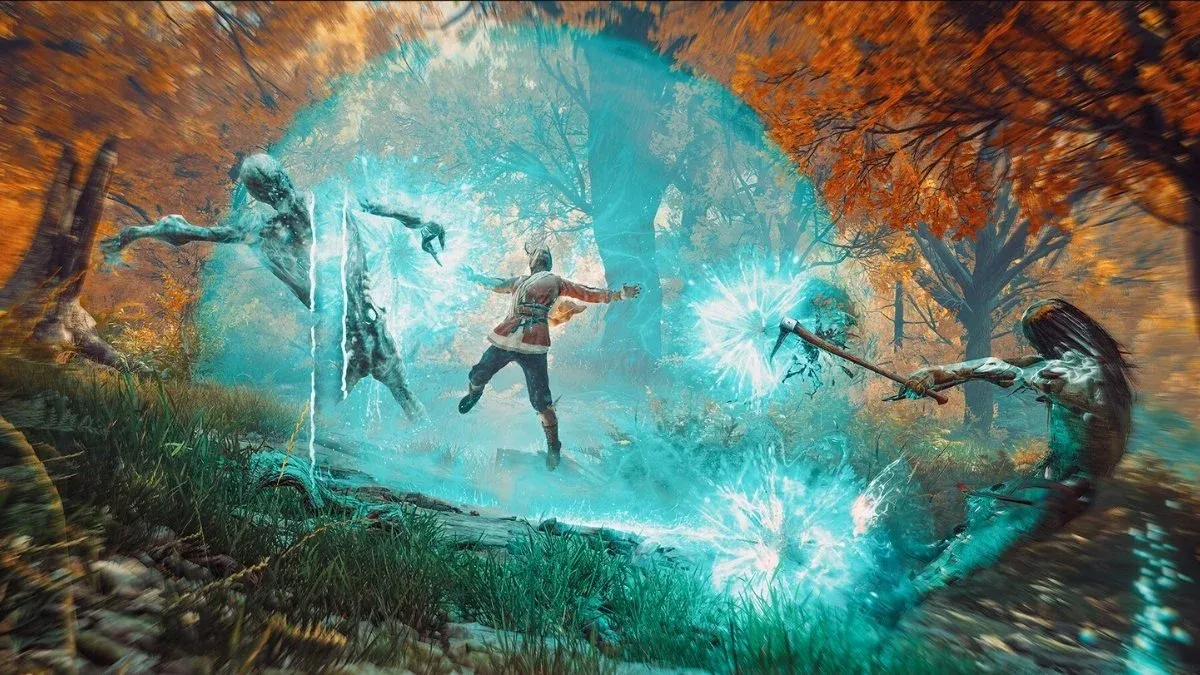Image: Remedy Games
The 13-year wait for Alan Wake 2 is finally over, and we have one of the best games of the year to show for it.
Not many things can live up to a 13-year-long wait, but Alan Wake 2 is definitely one of them. Remedy Entertainment’s 2010 action-adventure game Alan Wake can be viewed as the moment this studio shifted from making fun-but-cheesy shooters (Max Payne) to more experimental games dripping with atmosphere (Control), so it’s fitting that at the very peak of its success, the studio has finally returned to its defining franchise only to create its best game yet.
Sure, some might prefer Control’s action-packed gameplay or Max Payne’s bullet-time sequences to Remedy’s latest, but it’s a high ask to put these games above Alan Wake 2 - a defining entry in the survival-horror genre with a twisting narrative, jaw-dropping visual flair and some of the most memorable moments in gaming this year. Alan Wake 2 is a game I would heartily recommend anyone play no matter their taste for the genre or prior knowledge of the franchise. It is simply that good.
Alan Wake has been missing for 13 years
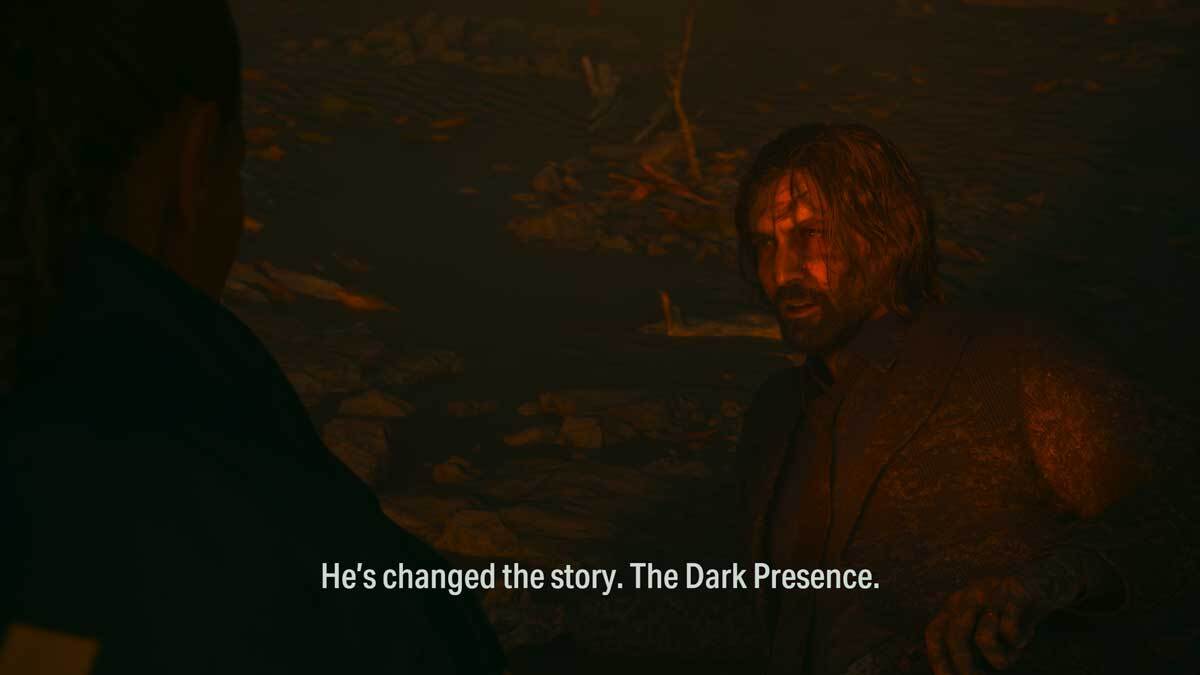
Echoing his real-life absence, Alan Wake has been missing from the small town of Bright Falls for 13 years. When we last saw him, the bestselling writer stranded himself in an ethereal realm called The Dark Place to save his wife Alice, while hounded by an evil doppelganger called Mr. Scratch who wanted to take his place in the real world. The second game picks up without much change in circumstance: Alan Wake is still trapped in the Dark Place, desperately searching for a way out.
Alan Wake 2 does a lot of things very differently than the original game, however. For one, it features dual protagonists and a non-linear story campaign. Equally important to Wake himself is Saga Anderson, an FBI agent who finds herself in the dark forests surrounding Cauldron Lake to investigate a grisly murder. She rolls into town with her partner Alex Casey, an exceptionally divorced man who clearly isn’t over his ex-wife, and also happens to look and sound exactly like Max Payne. Somehow, Remedy actually finds a way to tie this into the main plot.
Saga and Alan Wake’s stories can be played through in any order, but both stand on their own two feet. This isn’t a Resident Evil 2 situation where you’re playing two variations of the same story. Saga and Wake both star in their own wholly unique campaigns, with the former geared towards newcomers to the franchise while the latter boasts some truly experimental arthouse horror. Saga’s story is a Hannibal-tinged crime thriller with supernatural elements, told in dense forests, eerie amusement parks and small towns.
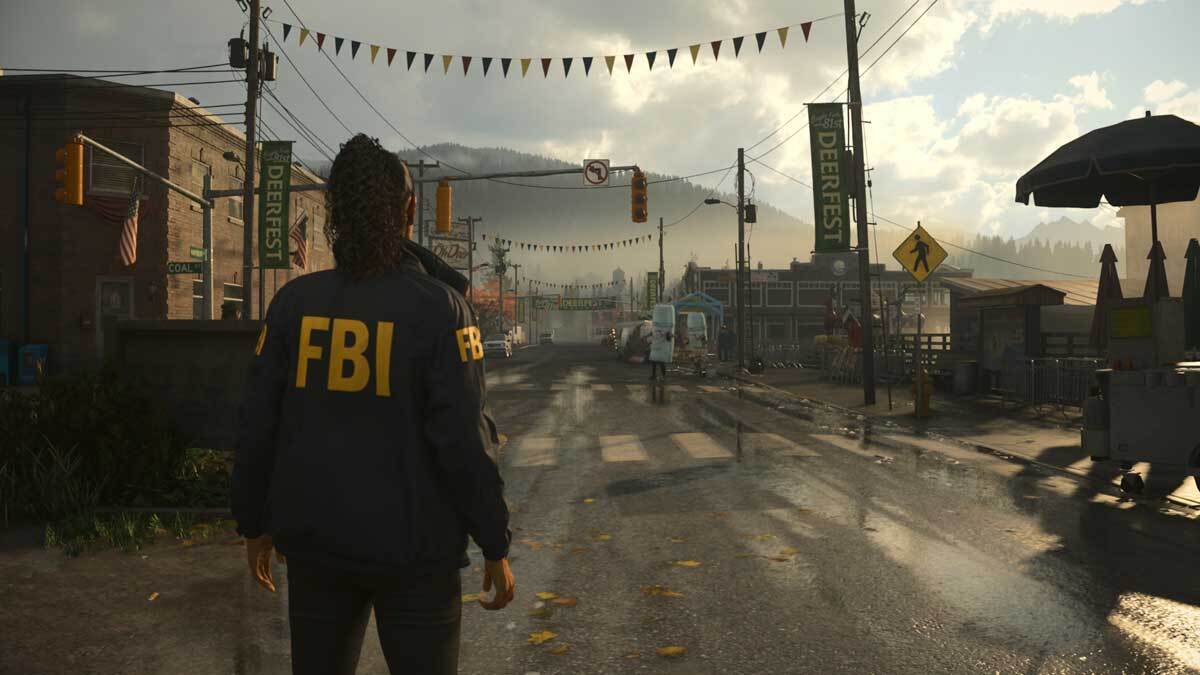
Wake’s story is much more akin to Silent Hill, as he writes himself deeper into a warped version of New York City that takes him to blood-splattered hotels, loopy talk shows and abandoned subway tunnels to find a way out. Their stories intertwine often and culminate altogether, but also stand apart in the best of ways. A bone I must pick with this story however, is that it often forgets the 13 years it took to arrive - even hardcore fans might have trouble remembering pivotal characters like Scratch and Nightingale, and the history behind the Dark Place and so on. There’s a lot of pre-existing lore here that really matters if certain emotional beats are to land the way they’re meant to, but the game hardly bothers to catch you up.
The story’s twists and turns are laid out so far in advance that anyone who isn’t actively asleep during cutscenes will also find them predictable to a fault. It’s easy to forgive Alan Wake 2 for its faults however, when its core mystery still feels so compelling and its narrative so immersive, that you end up buying into whatever nonsense it sells you regardless of its actual coherence.
Trawling the Dark Place and looking for clues
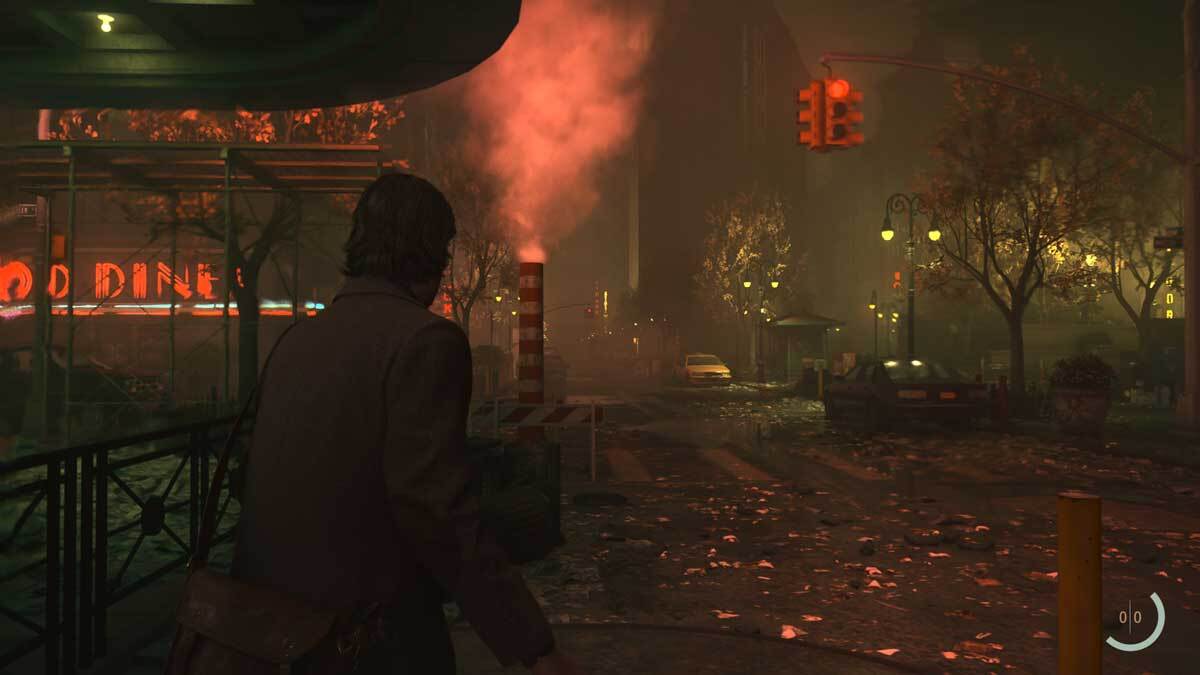
Alan Wake 2 is a survival-horror game, which marks a big departure from the original game in both tone and feel. The shadowy enemies that emerge from the Dark Place need to be exposed to light before they can be blasted away, which means that you don’t just have to worry about bullets, but batteries and grenade-like light gadgets too. Managing your resources carefully is key to surviving harder difficulties, but on Normal mode, the game is punishing but fair even for those unsuited to the genre. Safe Havens where players replenish health and create checkpoints are plentiful, and resources are everywhere if you take the time to explore.
Saga and Wake explore very different locations throughout their stories, but the places they visit and the people they meet reveal a truly exceptional peak in visual fidelity from Remedy. Control was good-looking, but it wasn’t jaw-dropping quite like this. Gusts of wind sweep across foliage with startling realism in the prologue, New York City’s noir-tinged streets are lined with bright neon lights and highly-detailed graffiti, Bright Falls’ streets feel alive and constantly evolve to reflect ongoing events, and all of it serves to further absorb the player in the delicious narrative Remedy wants to tell.
Alan Wake 2 is a survival horror game that feels confident in its ability to bring something new to the genre. Remedy showcases Wake’s writing talents in a very literal fashion, as the writer creates new story beats to unlock different areas in his close vicinity, carving a path forward with nothing but a typewriter and the power of imagination. Everything he writes comes true but must adhere to the laws of drama - he must create a strong story with a beginning, middle and end, and somehow make that story his way out of the Dark Place. A tall order, but satisfyingly implemented in gameplay.
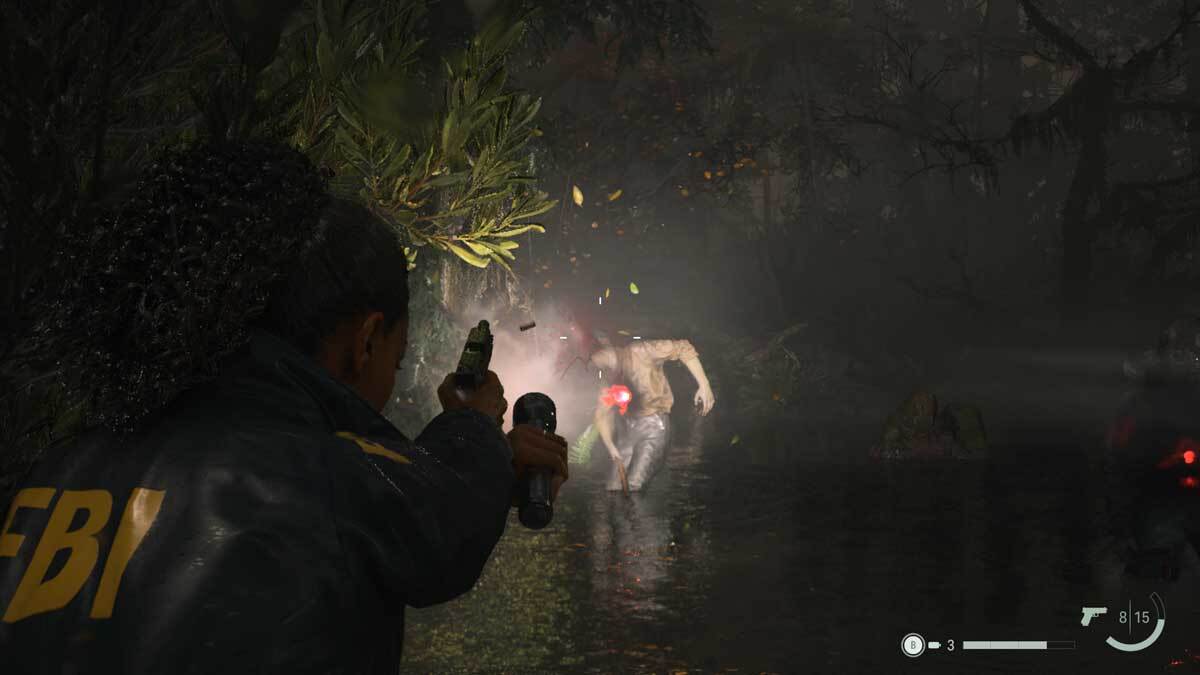
To emphasise her sleuthing gifts, Saga’s campaign relies on her collecting clues through conversation and collectibles before assembling them in the Dark Place to solve cases. It’s often crucial to head into the Mind Place and put a few clues together to find the next objective, but this mechanic feels half-baked in actual gameplay. In all of Remedy’s efforts to make you feel like a detective, it never feels like you’re doing actual detective work. Rather, you do a bunch of paperwork by putting case files into puzzle-like boxes, and Saga miraculously connects dots that don’t exist. Early on in the game for example, the game gave me the murder victim’s heart as a clue. When I slid that into the Mind Place where it belongs, Saga immediately surmised that the heart must have contained a critical message that would break the case.
What? Excuse me, Saga? How’d you figure that one out? Many story-relevant case files play out this way, turning the Mind Place into this weird little minigame of pushing paper around instead of translating Saga’s detective work to gameplay as satisfactorily as Alan’s writings do.
Are you watching a movie or playing a videogame?
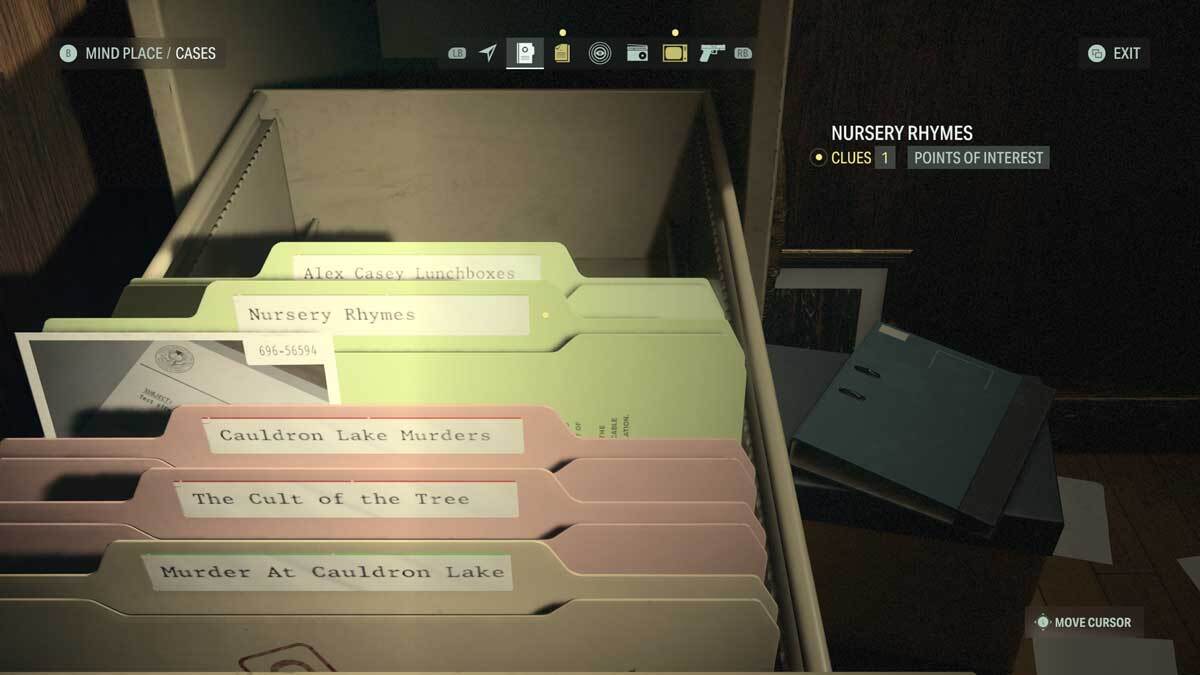
One last point I want to hit on in this review: live-action sequences. If there’s been one throughline throughout this Finnish studio’s entire portfolio, it’s a total adoration for the visual medium. Alan Wake (2010) had a live-action companion series called Bright Falls, but Quantum Break used live-action cinematics as actual in-game cutscenes to much controversy among players who didn’t enjoy sitting through short movies in between gameplay. Control seemed like the perfect middle ground for Remedy, with its live-action cutscenes relegated to lore videos displayed on projector screens, or surreal monologues transposed onscreen during gameplay.
Alan Wake 2 pushes Remedy’s live-action sequences further. Short films, talk show segments and more play out during gameplay to further drive home just how detached Wake is becoming from reality. The game’s single best chapter has become one of my personal favourite moments in gaming for reasons I cannot spoil, but it heavily relies on a mixture of live-action footage and actual gameplay that simply would not have worked as well 13 years ago. Remedy is at the top of its game here, completing its convergence of film and gaming once and for all.
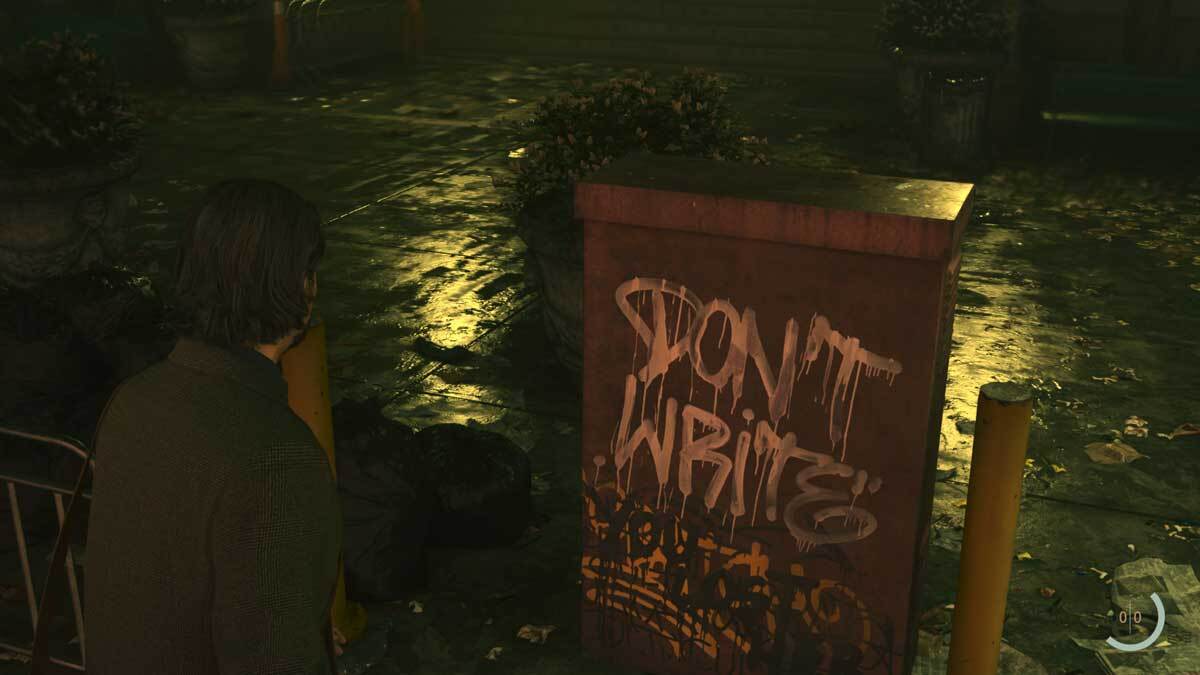
Sadly, the game does drop the ball a little in technical performance. I played the game on the Xbox Series X at launch and noticed some strange issues that have persisted even after weeks of patches. Sound issues (now somewhat fixed) led to completely out of sync dialogue in cutscenes and missing FX, which is especially noticeable because the game’s sound design is usually excellent when it comes to environmental chatter and weapon fire. The game’s remarkable visual fidelity was more significantly marred by frequent shimmering during gameplay. This is made worse on Fidelity Mode, where character models and parts of the environment would shine like aluminium foil when shrouded in darkness.
Besides these issues however, the game runs very smoothly on Performance Mode with just a few noticeable dips in framerate, and looks jaw-droppingly good with HDR enabled on an OLED screen. It’s a stunning showpiece of modern survival-horror, and certainly Remedy’s best-looking game in every category that matters.
Verdict

I was prepared to sail into end-of-year GOTY discussions with Baldur’s Gate 3 firm in hand, but Alan Wake 2 complicates things. Remedy’s latest is an indelible experience in modern survival-horror, pushing players into a serpentine mystery with Alan Wake at the heart of it, and Saga Anderson puzzling her way in from the outside. The game’s environmental design is truly breathtaking - from little details like story-relevant graffiti and posters on buildings to larger setpieces like evolving hotels and labyrinthian forests - with an oppressive sense of dread looming over everything that further immerses you into this world bent out of shape.
While the conclusion of its story failed to satisfy as much as I’d have liked it to, I can’t deny that the journey was ultimately worth it. It has meaningful things to say about the nature of fiction and my personal nightmare: writer’s block. With its few nagging issues so thoroughly dwarfed by the breadth of its innovation, Remedy’s first survival horror game is the best and most memorable experience this studio has put out thus far.
We received a review code from Epic Games and Remedy Entertainment for the purposes of this review.

